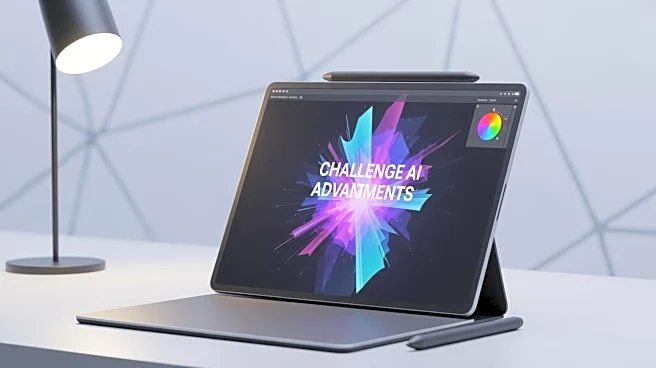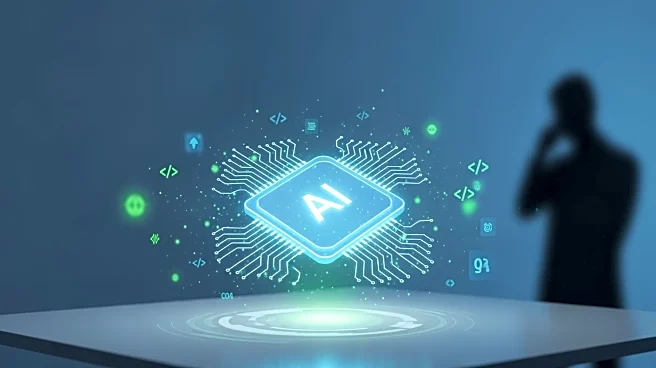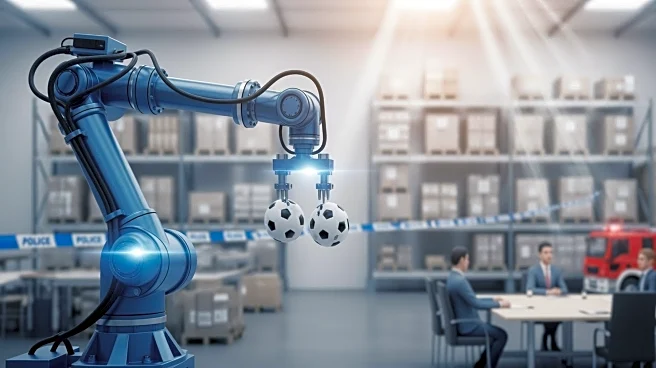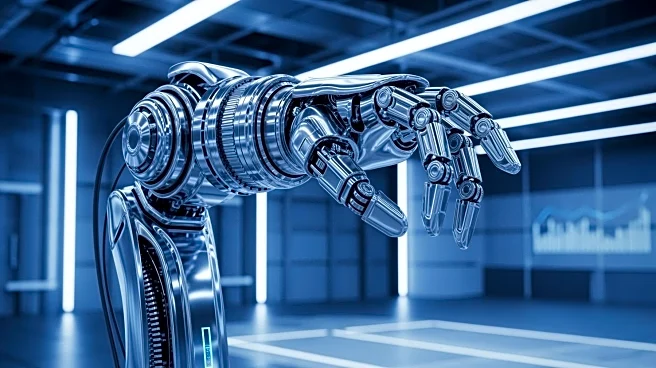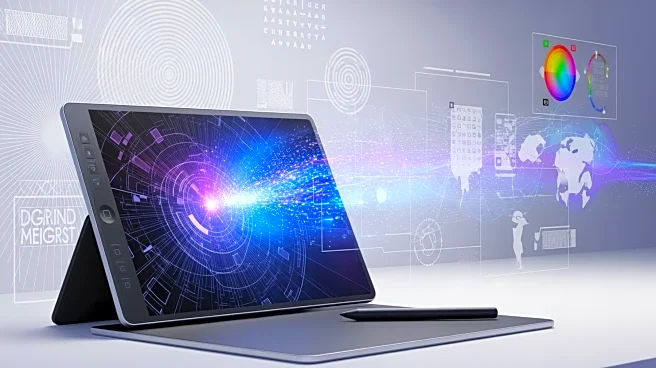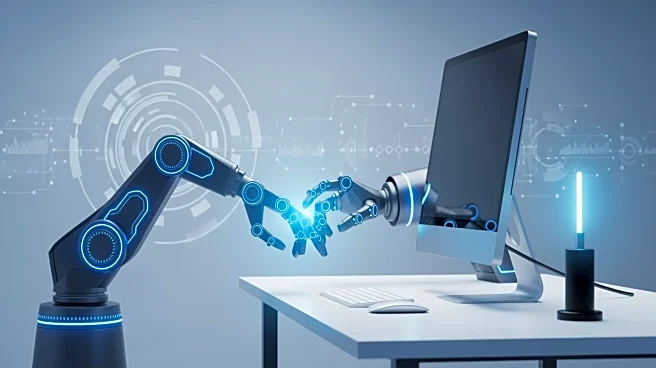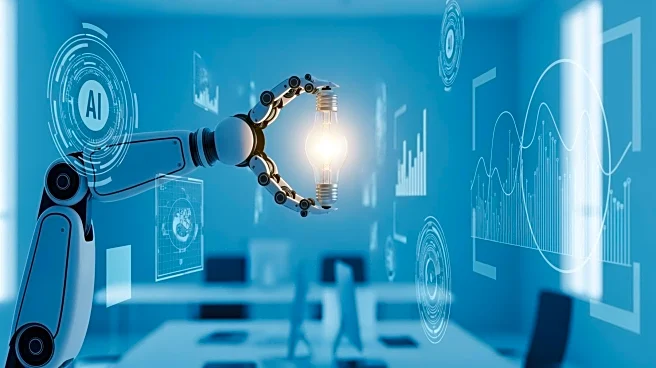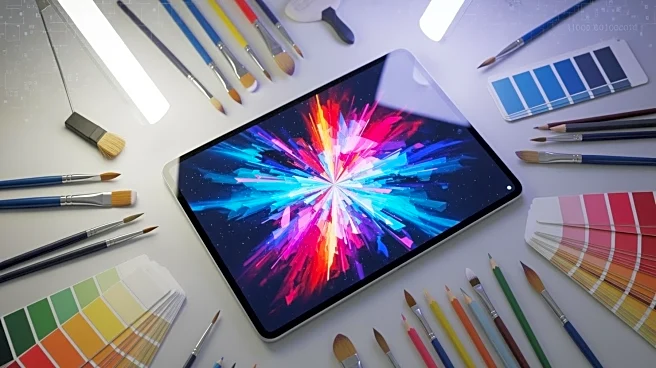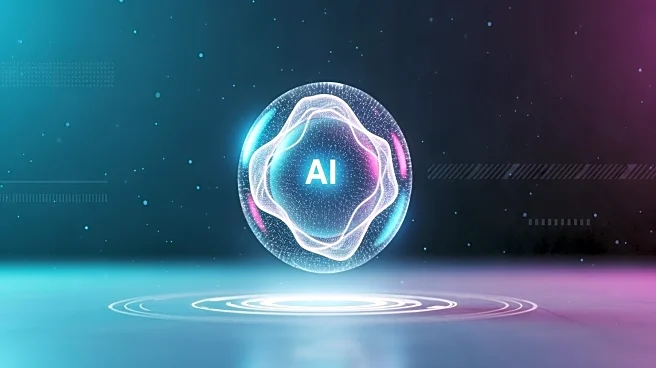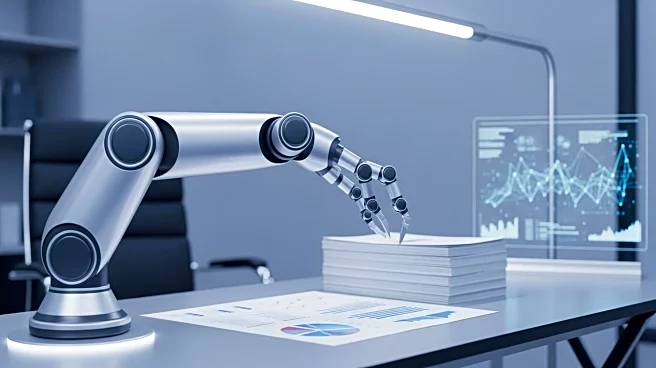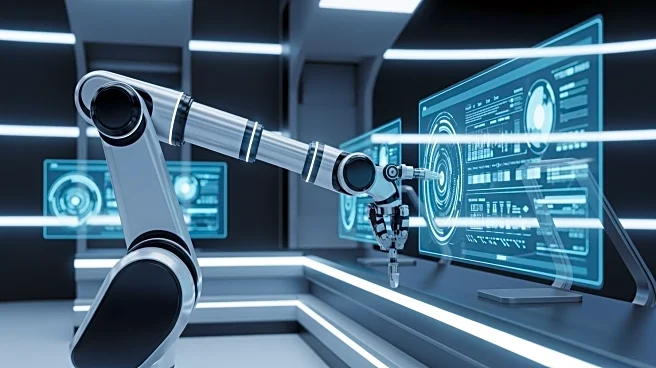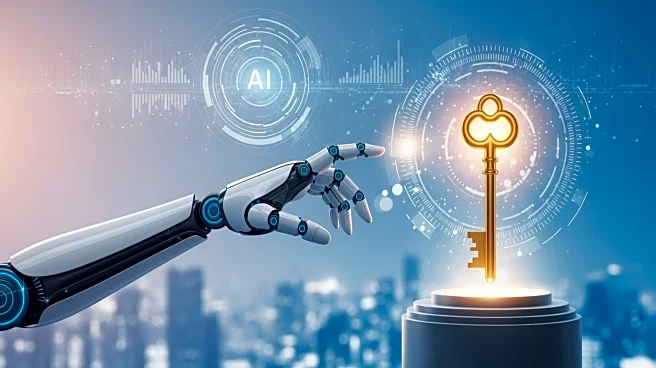What's Happening?
Graphic design graduates are increasingly finding themselves in competition with artificial intelligence (AI) for job opportunities. As AI technology becomes more prevalent in the industry, companies are opting to use AI for tasks traditionally performed
by human designers. This shift is leading to a reduction in available positions and raising expectations for faster work results. Graduates like Darby Hutchby and Ashleigh Sadler express concerns about the value of their degrees and the difficulty in securing employment. The World Economic Forum predicts that graphic design jobs will be among the fastest declining roles by 2030 due to AI advancements. Despite these challenges, some industry experts, like Dr. Rebecca Ross from the University of the Arts London, believe that designers will adapt and find new ways to integrate AI into their work.
Why It's Important?
The rise of AI in graphic design is significant as it highlights a broader trend of automation impacting various industries. This development poses challenges for new graduates entering the workforce, as they must now compete with technology that can perform tasks more quickly and cost-effectively. The potential decline in graphic design jobs could lead to economic implications for individuals and educational institutions that offer design programs. However, it also presents an opportunity for designers to innovate and leverage AI to enhance their creative processes. Companies may benefit from reduced costs and increased efficiency, but they also face ethical considerations regarding job displacement and the authenticity of AI-generated content.
What's Next?
As AI continues to evolve, graphic design graduates may need to adapt by acquiring new skills that complement AI technology. Educational institutions might consider updating their curricula to better prepare students for a changing job market. Companies could also explore ways to balance the use of AI with human creativity, ensuring that designers remain integral to the creative process. The industry may see a shift in the types of skills and experiences valued by employers, with a focus on unique human perspectives and the ability to work alongside AI tools.
Beyond the Headlines
The integration of AI in graphic design raises ethical questions about the authenticity of creative work and the potential for 'false advertising' when AI-generated content is used. There is also a cultural dimension to consider, as the role of human creativity and expression in design is challenged by technological advancements. Long-term, the industry may experience a transformation in how design is conceptualized and executed, with AI serving as both a tool and a competitor.
